By the time we returned to Hong Kong, typhoon season was in full swing. We woke to overcast skies and cooler climes; intermittent bouts of pouring rain gave us some relief from the humidity. With a relatively low-risk T3 typhoon warning, we spent the morning pottering around Sheung-Shui before heading out for dim sum. On our little tour of the neighbourhood, we paid a short visit to Liu Man Shek Tong; this is the ancestral hall of the Liu clan, to which Laurence’s family belong. Strictly speaking, it was closed for renovations but we were allowed in to take a peek.
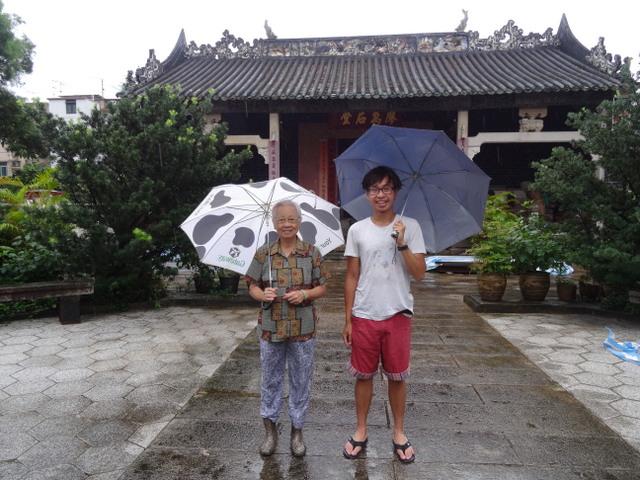
Dim sum consumed and bellies stuffed (mostly with barbeque pork buns and steamed cake in my case), Laurence and I then took the MTR to Tung Chung. A little over an hour later, we transferred to a bus bound for Tai-O; it was a rather bumpy forty-five minute ride on winding roads and, as far as I was concerned, was best spent sleeping.
Located on the south-westerly coast of Lantau Island, the largest of Hong Kong’s outlying islands, Tai-O is one of the last remaining traditional fishing villages. This small, picturesque settlement of stilt houses was built by the Tanka people, a nomadic group who have fished Hong Kong’s waters for centuries. Upon leaving the bus stop, we sought shelter under the tarpaulin covers of the nearby food stalls dishing up grilled cuttlefish, egg waffles and spicy fish balls; live fish swam in buckets and pufferfish hung from shop ceilings.
As the downpour turned into drizzle, we crossed the bridge and promptly stumbled upon Kwan Tai Temple, a centuries-old site of worship. The darkened interior was filled with incense coils, lacquered furnishings and ornate statues; sadly I was unable to get a decent picture but I’m sure Google can fill in the gaps.
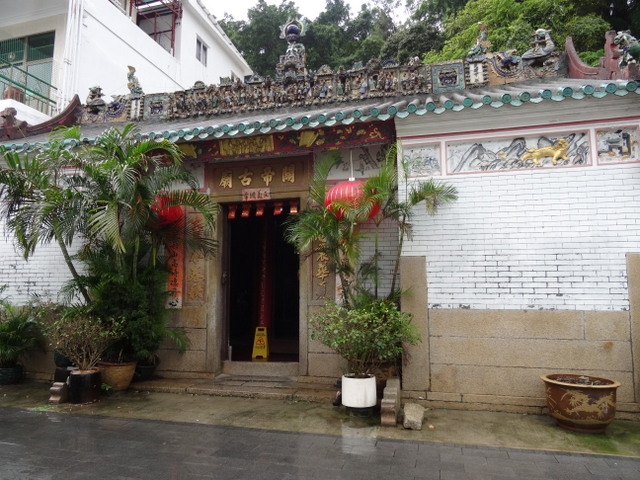
A friendly American family pointed us in the right direction of the stilt houses; we then duly trotted back across the bridge and through a maze of tiny streets to reach them.
Wandering amongst the stilt houses we followed rickety planks to viewpoints, dead ends and bridges connecting the different buildings and, for want of a better word, streets. Some were adorned with mismatched flowerpots and brightly coloured boats; others lay derelict. Tai-O is Hong Kong’s concrete jungle’s characterful predecessor; densely-populated homes perched on stilts, connected by narrow gangways, their higgledy piggledy formation exuding charm. Beneath the stilt houses, crabs scuttled around on the exposed mud flats.
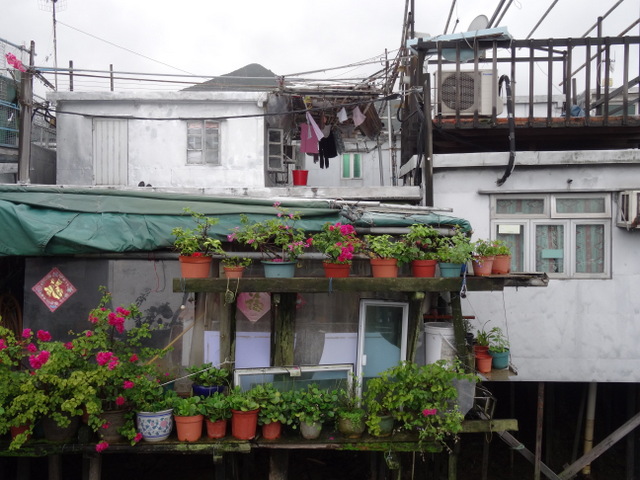
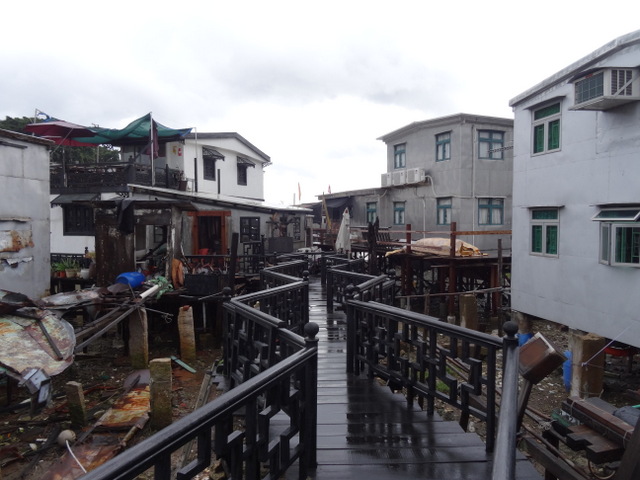
With the skies brightening, we decided to go on one of the little boat tours around the inlet and surrounding coastline. Fares paid, we hopped aboard and took a window seat each. Our little boat soon chugged off down the main waterway, enabling us to see the stilt houses from a different perspective. Beyond the harbour, the sea was choppy and the boat was (rather unnervingly) lurching from side to side as it made its way into open waters.
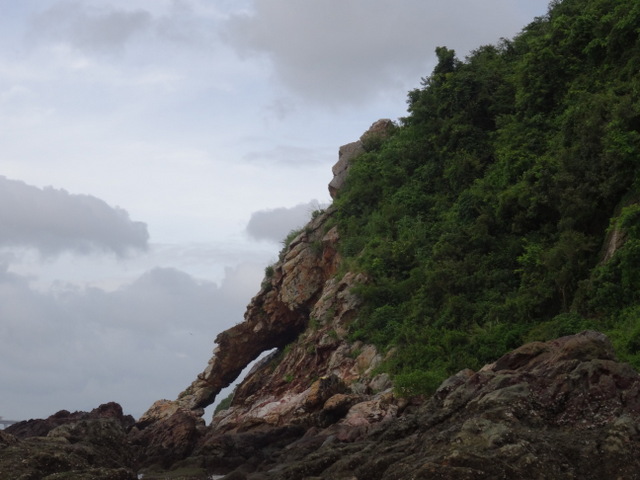
We stopped first at General Rock, a rock formation which looks like a man reclining against the cliffs, before continuing out to sea in search of the Chinese white dolphins. Although we didn’t see any dolphins, we did catch a glimpse of the Hong Kong-Zhuhai-Macau Bridge which was still under construction at the time.
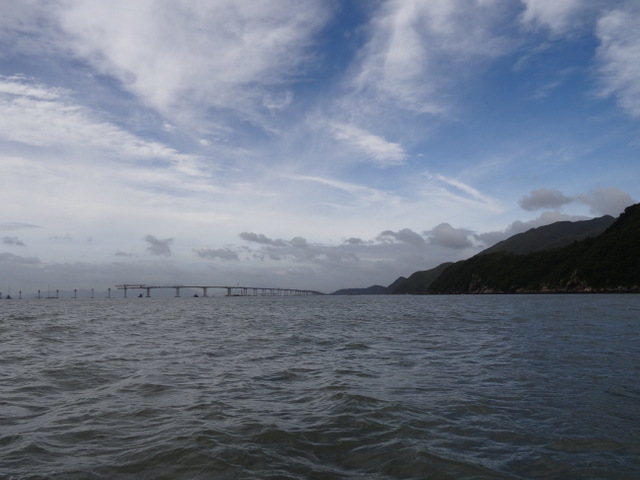
Once back on dry land, Laurence purchased some (very) spicy skewered fish balls and we spotted a gorgeous tortoiseshell cat eyeing up the dried fish. As the afternoon drew to a close, we boarded the bus back to Tung Chung and made our way back to Sheung-Shui for tea.
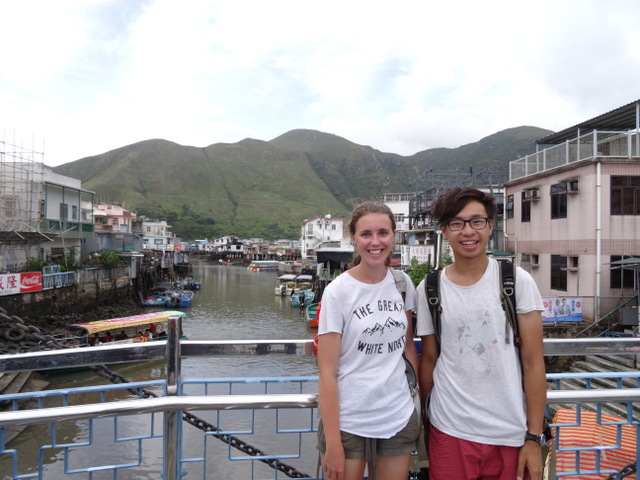
Tips:
- From Tung Chung MTR, take the n°11 bus to Tai-O. The journey takes forty-five to fifty minutes.
- Inexpensive boat rides are readily available for those who wish to see the famous (and rather shy) Chinese white dolphins. Even if, like us, you don’t see the dolphins it’s still good fun!